There are very few shortcuts when learning something deep and new. This post is about the challenges of writing my first blog post and how I lost and then found my way using Joseph Campbell’s storytelling framework, the Hero’s Journey.
Ideas are easy, the right idea is hard

To move forward confidently with building Momentum, the app, I needed an unfiltered platform to discuss the problem we were trying to solve. Blogging seemed like the best, low-risk path to do that. The cost is low (almost zero) and the writing process would force me to clarify my thoughts and how I talked about what I was working on. I had been keeping a list of different ideas for blog posts for months, but I was concerned about the amount of time it would take to write a post and sustain the writing process weekly.
Finding the right tool for the right job
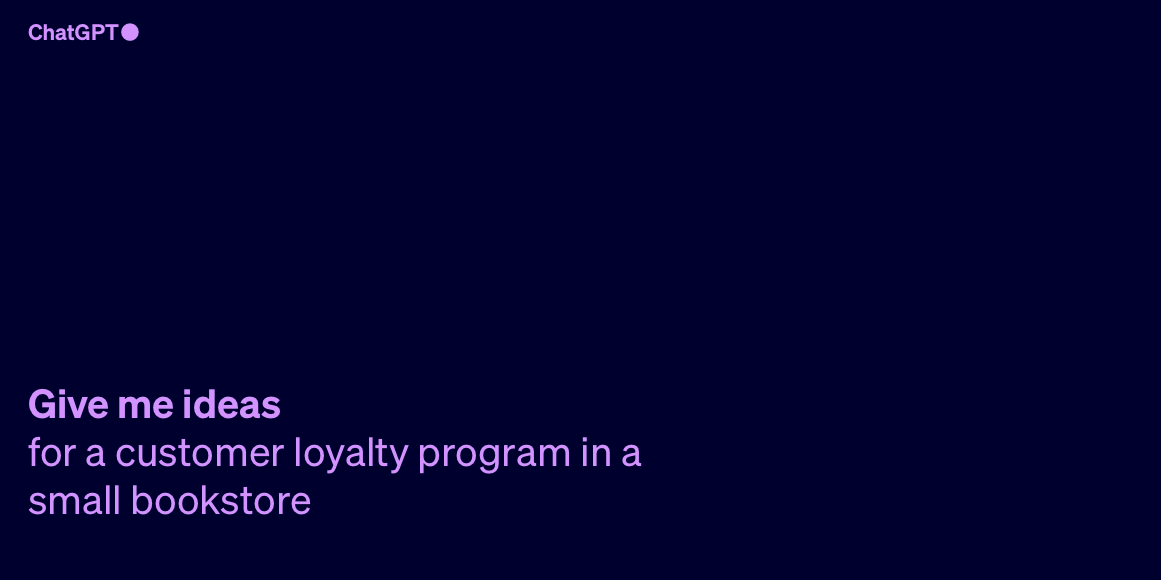
I have written B2B blog posts many times in the past, but this was a much more personal blog. It still needed to be concise and readable, but I was worried that I would create something really boring. Like coding, I knew there would be a learning curve with some trial and error. To avoid feeling overwhelmed and giving up, I decided to look for help. Rather than spin my wheels figuring out the best method for writing a blog post, I consulted everyone’s favorite AI - ChatGPT. And this is what I got back:
Choose a captivating topic
Understand your audience
[Research your topic]
Write an attention-grabbing headline
hook your readers with the introduction
Use a conversation tone
Provide valuable content
Use subheadings and formatting
Include visuals
Make it scannable
USE STORYTELLING
End with a strong conclusion
Edit & proofread
Promote
BE CONSISTENT
I don’t have all day, nor every day

Everything on ChatGPT’s list looked reasonable, with two exceptions. Starting from the bottom, publishing consistently was a goal and a worry. With the weekly chaos of work, kid, house, and life, keeping a consistent publishing schedule was more than a little intimidating. To get past that anxiety, I estimated how long it might take to complete each step in ChatGPT’s list. I thought, or hoped I could write a single post in about 6 hours. Spread out over a week, that was less than an hour per day and that became my publishing goal.
What does storytelling “really” look like?
The second item on the ChatGPT list to give me pause was number 11, “use storytelling.” I love the idea of trying to tell a story through a blog, but how do you tell the right story in the right way in this medium? I had a lot to share and could not say it all in one post. How was I going to tell my story, or the right part of my story, clearly, concisely, and in a compelling way? There were so many paths to follow covering so many years. How do you pull out the salient and meaningful parts and not get lost searching for the “why” that inspired the post? To answer those questions, I turned to presentation writing and design savant, Nancy Daurte and the Hero’s Journey.
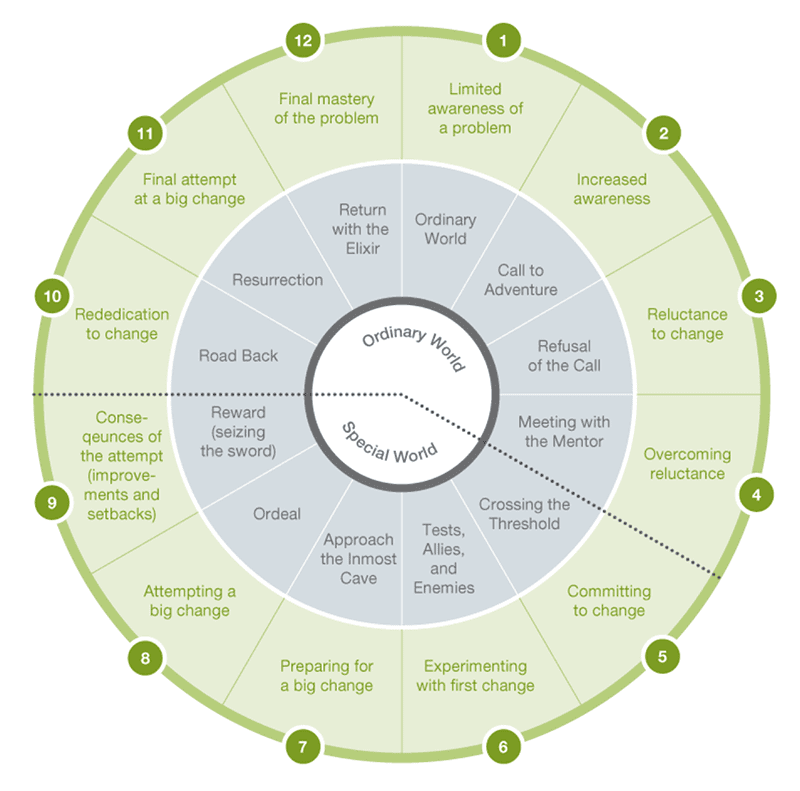
Writing a Hero’s Journey by number
I was first formally introduced to the Hero’s Journey as a framework in Nancy Duarte’s seminal book, Resonate, a sort of manual for developing great presentations. I wanted a structured process that I could trust and follow to give me the best chance of using story-telling in an interesting AND efficient way. In the book, Nancy shares the above diagram that breaks down Joseph Campbell’s Hero’s Journey template and illustrates it with the key scenes from Star Wars Episode IV, A New Hope. This graphic simplified the Hero’s Journey into a kind of paint-by-numbers model for me.
I have long been enamored with this diagram, but when I started trying to write the story for my first post using it, I soon found myself lost. I didn’t know if it was going to work. I had tried using this model in the past and it seemed like overkill. I thought maybe this time would be different so I kept going. Three acts and twelve scenes with subtle transitions created a lot of moving parts. To simplify it, I built a template in the following example to guide my writing through each scene.
How far does the rabbit hole go?
I started filling in my template, writing, and writing. I soul-searched through my story, going back to the beginning, trying to find the important if not dramatic events that lined up with the kind of story told in Star Wars. No matter how much I wrote and edited, the more I thought about the subtle structure of the hero’s journey the deeper I went down rabbit holes for each scene. Before I knew it, I had spent twice as much time as I planned and I had not finished my first draft.
Inner tension calling: decline or accept?
At this point, I was 20+ hours into the six-hour writing process and I didn’t know where I was in my own story. In my head, I kept telling myself to ship fast, but I really didn’t know the right way to tell the right story. I had committed to my app development partner, Lou, that I thought I could publish one post per week. I was two weeks into the first entry and I started to have doubts about my ability to deliver and worried that I was failing myself and Lou.
Doing nothing, to answer the call
I had done a lot of writing, but could not see the finish line. I tried putting in extra time to calm my angst. Then life got in the way and pulled me out of the writing hole. My son came home from college for the weekend. Between picking him up, bringing him back, building this biltong box, meal prep and just enjoying the weekend, the time went by without writing. But, it gave me the mental space to reflect consciously and subconsciously.
I had written more than three thousand words. Reading through it, I hated its length. The events were relevant, but not on point. I wanted to get to my point faster. This was a blog, not a movie. By trying to follow the Hero’s Journey framework literally, I was clouding up my narrative with meandering side stories that seemed necessary to fill boxes like “Tests, allies, and enemies.” I don’t have anything close to a cantina scene in my story.
Filling in every box pulled too far from the story’s arc and in many ways started me down entirely different stories. Though it seemed like a sound approach, conceptually, the model I was using just wasn’t working in practice. Doing nothing for a weekend gave me a chance to embrace the root tension. Once I stopped writing and stopped trying to force everything into the template, I could see I needed to simplify the story with a simpler version of the Hero’s Journey.
✂️Addition by subtraction✂️
There’s something cathartic about cutting unnecessary words and thoughts from my writing. It’s like dropping ballast to help a boat go faster. In this case, I needed to cut out whole scenes from the three-act 12-scene monster of the framework I was using. I had lost my patience with the sections that seemed redundant. I went looking for simpler frameworks for the Hero’s Journey. I started to see where scenes could be combined into a single paragraph or even a sentence. The narrative arc I could not see before became clearer. I could see where I began and where I was ending. In between I could quickly course-correct, discover, and continue the narrative as intended without getting lost in so many rabbit holes. Finally, the end of the first draft was in sight.
Looking back to go forward

When I started my first post I had a goal of completing it in six hours or less. I thought this would be the minimum amount of time it would take to write something I would be satisfied with. It was also the maximum amount of time I thought I could spare per week to keep the blog going. In the end, the first post consumed nearly thirty hours of time and effort over the course of three-plus weeks. I don’t regret setting my original goal nor do I regret taking so much time to complete it. Trial and error comes at a cost and I think the return in this case will have compounding benefits going forward. It’s already helped me write this post in less than one-third of the time it took to write the first one.
Keeping the faith (in the Hero’s Journey)
Despite my challenges with it, I still believe in the Hero’s Journey framework. I just happened to start with a complicated version. It took a lot of time, but it was valuable to test the three-act twelve-scene approach until it broke. Reaching its limit reduced any future doubt. If I decide to write a screenplay in the future, I know where to start. For blogging, I now know there are simpler approaches to storytelling that seem like a better fit like the one I ultimately used:
Act 1: Ordinary world/Call to adventure - I needed a platform to start a conversation around Momentum. Blogging seemed like the best option.
The Mentor - I used ChatGPT and the Hero’s Journey from Nancy Duarte’s book, “Resonate” to find the best path to get started with blogging using a storytelling framework.
Act 2: Crossing the threshold: I created templates to simplify and apply the Hero’s Journey literally.
The ordeal: I spent hours writing and struggling to fill in all twelve scenes from the hero’s journey. I felt like I was failing myself and Lou. I started to doubt my approach but was already too far along to give up. After an unintended pause, I pivoted, seeking a simpler version of the Hero’s Journey framework that led me where I needed to go.
Act 3: The return: Three acts = good, 12 scenes are too much for my blog.
Three acts and five steps/scenes worked best.
I stopped writing copy and instead wrote out the key points in an outline to see if the arc made sense, before writing and getting lost in the details of any one scene.
I used this model for post #2 (this post).
My goal is six hours per post. It took thirty hours to write the first one. This post is on pace to publish in less than ten (A 67%+ decrease in time, YAY!)
Post log: The value of time awareness
When I was most discouraged writing that first post, probably around hour twenty, one thing helped alleviate my anxiety and kept me going. I had a very clear awareness of the amount of focused time and effort I was investing in the process.
I wasn’t meeting my six-hour plan. I was frustrated and I was stuck. But I knew I was putting in time and effort that mattered. I used the Excel version of Momentum to plan and track my writing. It has an integrated timer that automatically the blocks of time (25 min each) I was putting into the process. I had the satisfaction of seeing the blocks of time pile up even when I didn’t know for sure what the outcome would be.
I could not control or predict how to make the writing process go faster, but I could control the volume and quality of the time and effort that I was putting into it. I could also see when I was putting in too much time on the blog and needed to pull back. I could live peacefully with that weekend of no writing because I had the satisfaction of knowing I had reasonably done all that I could to that point. Despite my deep desire to finish and ship, it felt safe and eventually valuable to take that break. Visually seeing that progress made all of the difference. Going forward, I now have a baseline for blogging. And the motivation to get better.
Your call to the journey
This blog is intended to be more than a spectator sport. I need your help. I need to talk with more people like you to get more perspectives on the problem I’m trying to solve (see Post #1 - Playing the Long Game). I need to hear from folks like you to see if my solution might solve that problem for both of us. To that aim, I intend to talk with 30 people by the end of December 2023. If you want to see where this journey leads and join the conversation, please subscribe below, and I’ll be in touch soon.


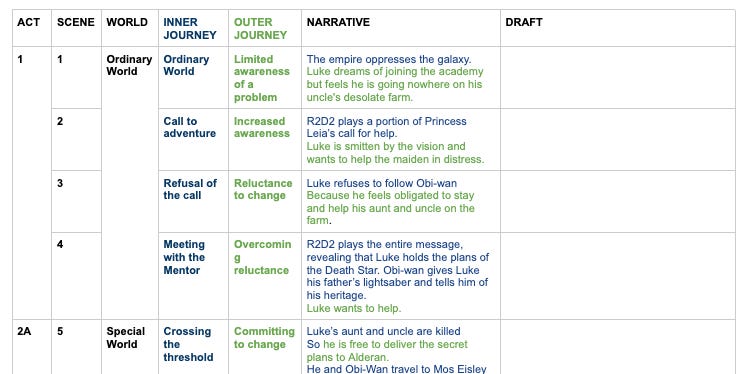

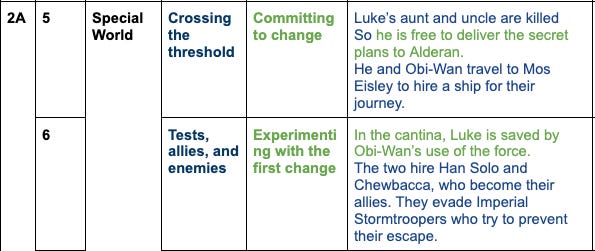
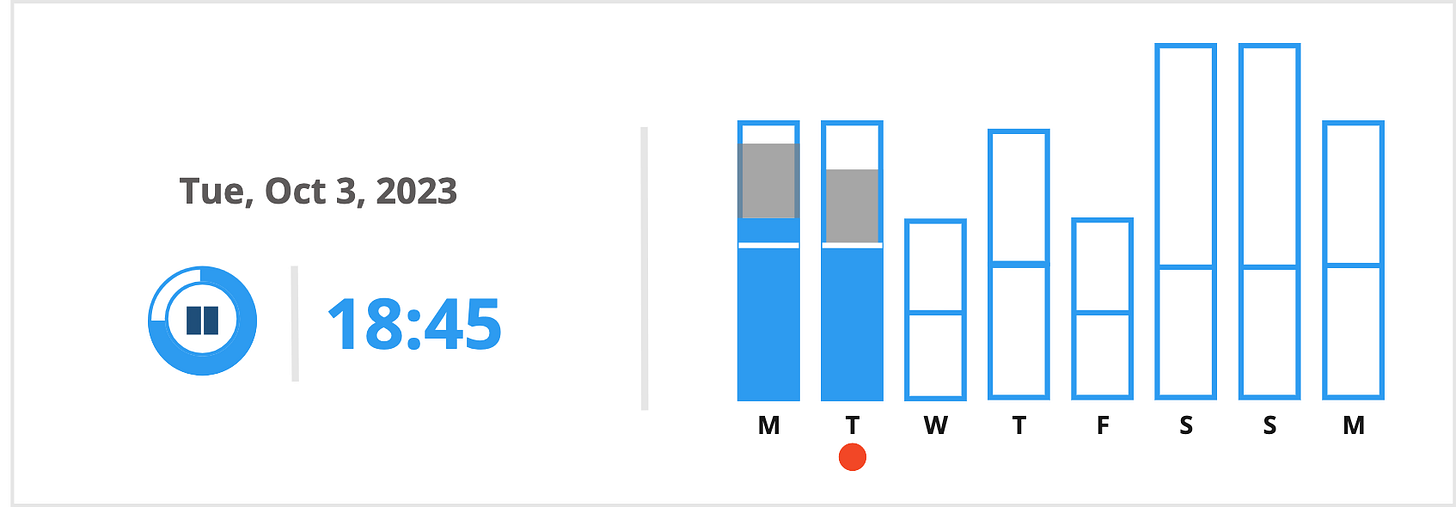
One of the interesting takeaways from this post is your map for when and how you used AI and when you didn’t. As a writer myself I find the idea of using AI (for anything, including writing) extremely daunting. This was helpful guidance along with good synthesis of the concept of the hero’s journey.
What's impressive is how you managed to reduce the time to author blog posts by such a large amount. The process will become more natural as you continue to post, getting closer to that 6 hour goal. I look forward to reading your future posts!